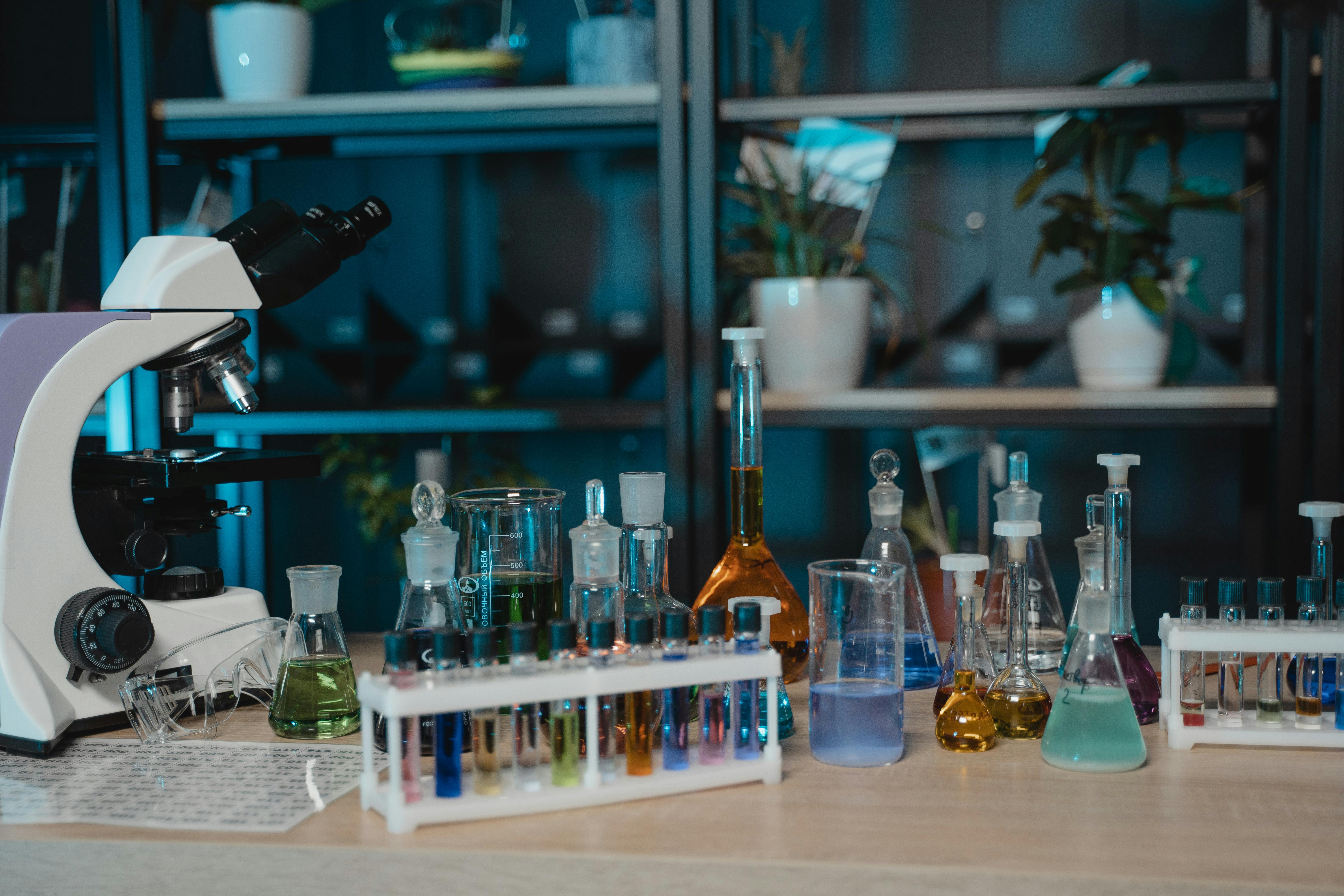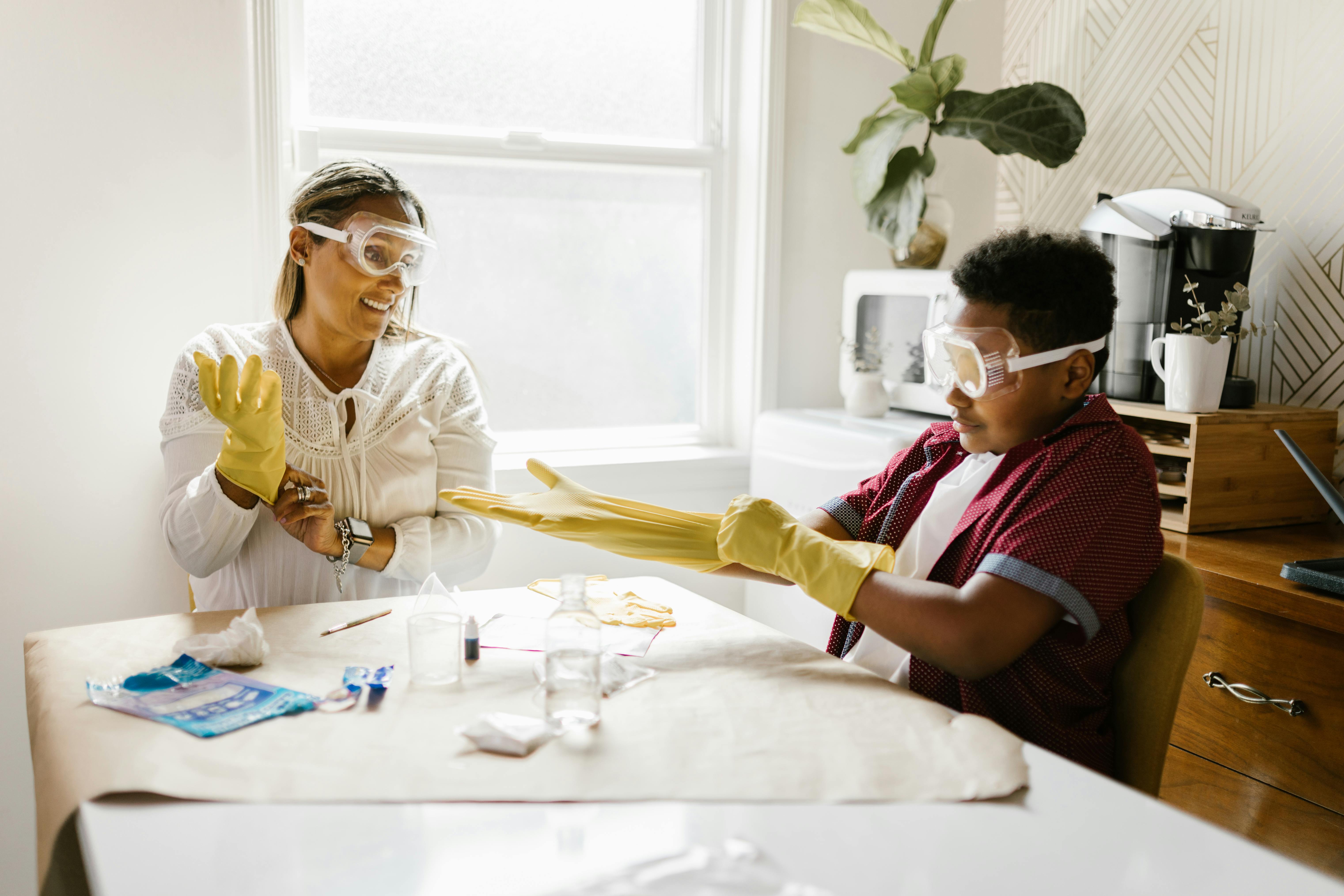As an affiliate, I earn from qualifying purchases, but this doesn't affect the reviews or recommendations—your trust is important to me!
Vinegar Egg Geode Experiment: Simple and Fascinating Science

Today, We're Making:
- Vinegar Egg Geode
- 'Crystal Eggshell Experiment': After performing the basic Vinegar Egg Geode experiment, take it a step further by comparing how different types of salt (Epsom salt, sea salt, table salt) affect the growth of eggshell crystals. This teaches children about the principles of crystallization and how different materials can result in different outcomes.
- 'Color Mixing Experiment': While making the Vinegar Egg Geode, add different food coloring to separate eggs. Once the geodes are formed.
Ever marvelled at the intricate sparkles of crystal geodes and wished you could create one right within your kitchen?
Well, that's exactly what the Vinegar Egg Geode experiment allows you to do. Combining the simplicity of kitchen science with the fascinating dynamism of geode formation, this DIY science venture turns ordinary eggs into shimmering, crystalline wonders.
With just vinegar, eggshells, and a dash of patience, you, too, can delve into an egg-citing exploration of acid reactions and the crystallization process.
This kid-friendly science experiment serves not just as captivating fun, but a gateway into understanding the hidden intricacies of our universe in a nutshell (or rather, an eggshell). So let's get started and crack the mystery wide open!
Of course, Vinegar Egg Geodes are not only about the visual wonder, they're also a platforms for learning.
Every step of this Geode Experiment brings new opportunities for dialogue, exploration and education. The process begins by using vinegar to dissolve the eggshells' calcium carbonate, creating a perfect introduction to acid reactions. The pitted appearance left on the eggshell after soaking it in vinegar makes a great visual representation of chemical reactions - a fun science lesson that's easy to understand.
Laying the Groundwork for Geode Formation
As you then allow your vinegar-treated egg to dry, you are quite literally laying the groundwork for your geode formation. As the egg dries, the spots where vinegar has eroded it become ideal anchors for your crystal formation. It's a sparkling example of how simple science can transform everyday items like eggshells into something extraordinary.
A Key Part of the Process: Coloring and Crystallization
A key part of the process is coloring and crystallization, which is a step ahead in the journey of understanding the science involved. The Vinegar Egg Geode experiment brings color to the table, an added dash of creativity that makes the science education fun for kids. A mixture of alum powder and boiling water, along with a color choice for your geode, sets the crystal-growing process in motion. Just as in nature, the cooling solution creates super-saturated conditions, giving rise to brilliant, Homemade Geodes.
Are You Ready to Explore STEM Experiments?
Are you ready to go beyond acid reactions and explore STEM experiments in their entirety? This process is a treat to watch and a teachable moment to understand how crystal geodes form naturally over thousands of years. Science activities like these encourage kids to pursue a DIY science mindset and build a growing scientific curiosity. Believe it or not, kitchen experiments like these could be the stepping stones to a future in the field of STEM.

The Journey of the Vinegar Egg Geode Experiment
The journey you get to embark on with the Vinegar Egg Geode experiment bridges the gap between science and childlike wonderment, right in your very kitchen! It's an inspiring blend of fun, creativity, education and a spark of curiosity into the realms of STEM.
Encouraging Childlike Curiosity
It emboldens kids to question, to create, and to humble in the face of natural processes that have existed for centuries. Though built on the framework of a simple experiment, the journey is nonetheless staggering - from a plain egg to acid reactions, and ultimately from crystallization to crafting a DIY geode.
Ready for the Experiment?
So grab your eggs, your vinegar, and that dash of patience! This experiment too is like a geode - seemingly simple on the outside but unraveling hidden layers of fascination as you delve in. Remember, every sparkle in your homemade crystal geode represents a twinkle of knowledge gained, and surely, that's an experiment worth cracking into!

You May Also Like These:
Crystal Eggshell Experiment
Required Ingredients:- Eggshells (clean and dry)
- White vinegar
- Food coloring (optional)
- Borax (available in the laundry aisle of your grocery store)
- A glass or plastic container for each color
- Hot water
- A spoon to stir
Take your clean, dry eggshells and break them in half. You can use any size egg, but the larger the egg, the larger your crystal will be. Once broken, clean the eggshells thoroughly to remove any yolk remnants.
Step 2:Place each eggshell half into a separate container. If you want colored crystals, add a few drops of food coloring into each container.
Step 3:Fill each container with enough hot water to completely cover the eggshells. Make sure the water is hot, as the heat helps the Borax dissolve, thus forming the crystals.
Step 4:Add the Borax to the water. The amount of Borax needed may vary. The key is to keep adding and stirring until the Borax no longer dissolves, and there are some residuals at the bottom of the container. The water should look cloudy.
Step 5:Leave the eggshells in the Borax solution overnight. The crystals form as the water cools down and the borax re-crystallizes.
Step 6:The next morning, carefully scoop out your eggshells and let them dry. Be gentle so you don't break the delicate crystals that have formed.
Step 7:Once dry, your Crystal Eggshell Experiment is complete! You're now the proud owner of some beautiful homemade geodes.
Comparing Different Types of Salt Experiment
Materials:
- Table salt
- Epsom salt
- Road salt
- Sea salt
- 4 clear glasses or containers
- Water
- A measuring spoon
- Timer
- Notebook and pen
Instructions:
- Fill each glass or container with the same amount of water.
- Add a tablespoon of table salt to the first glass.
- Add a tablespoon of Epsom salt to the second glass.
- Add a tablespoon of sea salt to the third glass.
- Add a tablespoon of road salt to the fourth glass.
- Stir each solution carefully until the salt has dissolved completely.
- Start the timer as soon as you stop stirring each solution.
- Observe and make a note of how long it takes for each type of salt to dissolve.
Keep in Mind:
- Be careful not to get the salt in your eyes when you are stirring and dissolving.
- Always wash your hands after completing the experiment.
Taking it Further:
- Try the experiment again using different temperatures of water to see how it affects the dissolving process.
- Try using different amounts of salt for each glass and observe whether it dissolves faster or slower.
Sea Salt Creation Experiment
A fun and educational experiment teaching you how to create sea salt right at home!
Ingredients:
- Sea Water (1 gallon)
- Large, shallow, heat-resistant dish
- Sunlight or an Oven
- Funnel
- Strainer (Cloth or coffee filters work)
- Airtight Jar for storage
Instructions:
Step 1: Filter the sea water
Funnel the sea water through your strainer into the large, shallow dish. This helps remove impurities and larger debris.
Step 2: Place the Dish
Place the dish in a sunny spot if you have warm, sunny weather or in an oven set to a low heat.
Step 3: Evaporate the Water
Allow the water in the dish to evaporate. This can take anywhere from a day (if using an oven) to a few days (if using sunlight). Monitor the progress.
Step 4: Harvest your Sea Salt
Once the water has evaporated, you will see salt crystals left in the dish. Collect these and store them in an airtight jar. Voila! You've created your own sea salt. Enjoy it in your recipes!
Vinegar Egg Geode: How Does Table Salt Affect the Growth of Eggshell Crystals?
Explore the fascinating world of crystallization with this interesting STEM experiment. Watch your child's amazement as they grow their own crystals on eggshells, learning about how table salt impacts the growth of these crystals. Let's dive in!
Materials Needed
- Vinegar
- Table Salt
- Eggs
- A Glass or Plastic Container
- Microscope (optional)
Instructions
- Preparation: To start with, carefully crack the eggs in the middle. Clean out the eggshells and make sure to leave half an eggshell for the experiment. Rinse thoroughly.
- Setup: Place your eggshell halves in the glass or plastic container. Ensure the inside of the eggshell is facing upward.
- Vinegar Time: Then, pour enough vinegar into the container to fully submerge the eggshell halves. Observe the vinegar react with the eggshell, creating tiny bubbles.
- Adding Salt: Add a generous amount of salt to this mixture. Make sure to stir until the salt dissolves completely.
- Wait and Watch: Let the eggshell halves sit in the vinegar and salt mixture for several hours or overnight. Observe the growth of crystals on the surface of the eggshells.
- Observation Time: If available, use a microscope to take a closer look at the crystal structures. Notice any difference in the size or shape of the crystals with salt compared to without salt.
Through this experiment, the children will understand how different materials like table salt can lead to different results, teaching them about solubility, reaction rate, and crystallization. Enjoy the journey of discovery!
Egg Geode STEM Experiment
Ingredients
- 1 dozen of eggs
- 1 bottle of food coloring (multiple colors if desired)
- Alum powder (found at your local grocery store in their spice section)
- 1 bottle of white school Glue
- Small paintbrush
- Plastic or glass containers (one for each color of geode that you want to grow)
- Water
- Approximately 1 day of patience
Instructions
- Crack the Egg: Carefully crack each egg around the top third or quarter. You want enough of an opening to pour out the egg and to later fill with alum but not so large that the egg is no longer egg-shaped.
- Empty the Egg: Empty out the contents of each egg and rinse them out carefully under the tap. Let the clean shells dry.
- Apply Glue: Using a small paintbrush apply glue all over the inside of your eggshell or if you are using a glue that your child can squeeze from a bottle, squeeze glue in the bottom of the egg and rotate the egg to let the glue spread up the sides.
- Sprinkle Alum: Immediately after applying the glue, sprinkle alum powder on the inside of the shell making sure it sticks to the glue all over the inside of the shell.
- Let it dry: Allow the egg with glue and alum to sit and dry overnight.
- Prepare Alum Solution: After drying, prepare another batch of alum solution. Heat one cup of water (it does not need to be hot, just warm enough to dissolve the alum powder) and slowly add alum and stir until the powder no longer dissolves. Allow this mixture to cool slightly.
- Add Food Coloring: Once the alum solution has cooled down a bit (wait at least 20 minutes), stir in some food coloring. This will color your crystals making geodes more visible.
- Insert Eggs: Carefully place your egg into the alum solution. Make sure the egg is completely submerged.
- Wait: Let your eggs sit in the solution undisturbed for 12-15 hours. The longer they sit the bigger the crystals in your geodes will grow.
- Observe the Results: After the designated time has passed carefully remove your geodes (eggs) from the alum solution. Set them somewhere safe and allow them to dry.





































